Creating an effective email marketing strategy is not an easy task. While the act of sending an email may seem simple, it is a marketing channel that requires mastering certain conversion techniques and thinking upstream about your emailing strategy’s importance.
In this post, learn the 8 steps to develop an effective email strategy that is aimed at optimizing your conversion rate, step-by-step.
Prepare your notepads, and… let’s get started!
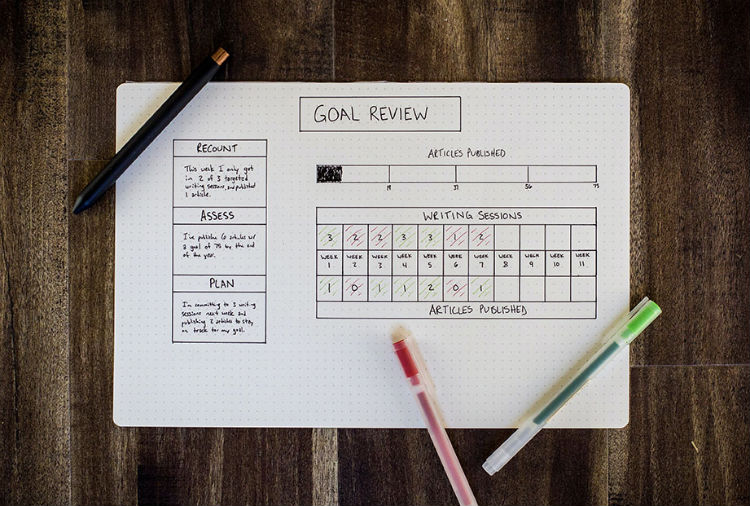
Firstly, define & track your goals.
Before designing your campaign, take some time to define your goals.
Without a clear goal, you will not be able to decide what data you will want to track and measure in order to reach your goals and improve your email conversions. Your email marketing strategy will vary depending on the delineated objectives.
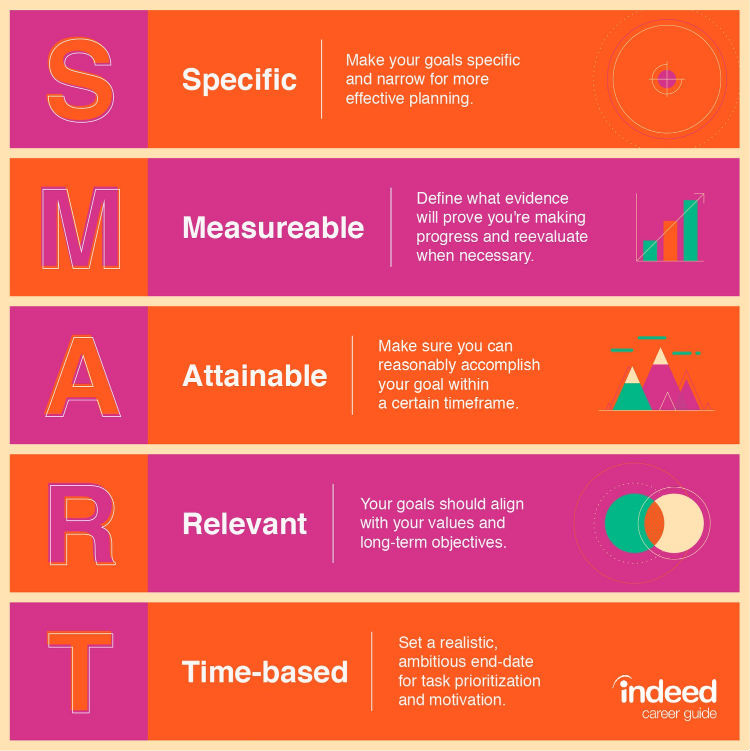
Start by setting S.M.A.R.T goals
The S.M.A.R.T acronym stands for goals that are specific, measurable, achievable, realisticand timely. This framework comes in handy when you are setting your goals, and helps communicate your email strategy downstream with your team members.
An example of a S.M.A.R.T goal for an email marketing campaign is as follows: “Improve email deliverability rates by 12.5%, from 80% to 90%, within the third quarter (Jun 2020 to Sep 2020)”. The goal is succinct, clear, directly measurable within your email software, and time-bound. Setting clear goals like this ensures everyone on your team is rowing in the same direction.
It is vital to set related quantifiable goals whenever possible, such as the number of clicks derived from each email marketing campaign, the sales attributed to email marketing, or the email open rate.
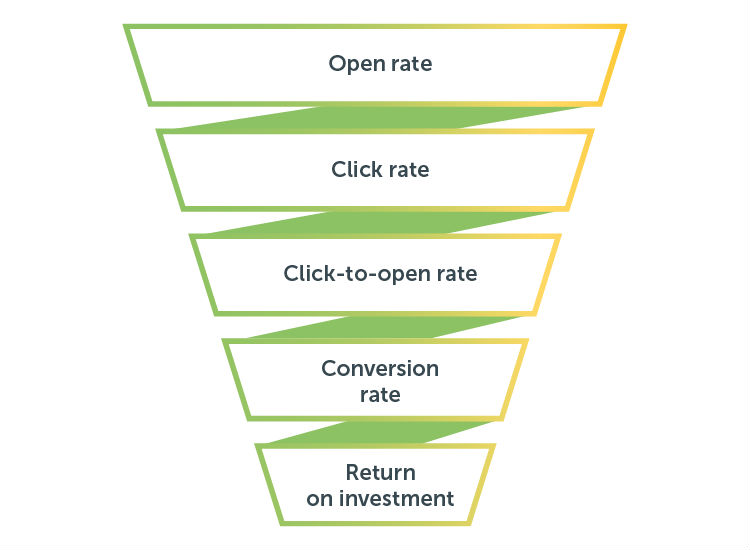
Identify your key email marketing KPIs
Your email marketing strategy should be accompanied by a set of email marketing KPIs.
A Key Performance Indicator (KPI) is a measurement of the performance of an activity. Alongside your specific goals, you should also identify, measure, and analyse your related email marketing KPIs.
In the case of email marketing, these are the core KPIs to identify and evaluate:
- Email open rate: Tracks the percentage of subscribers which opened the email you sent
- Click-through rate (CTR): Tracks the percentage of readers who clicked on link(s) in your email
- Conversion rate: Tracks the percentage of people who clicked on link(s) in your email, and then completed a conversion event, such as making a purchase.
- Bounce rate: Tracks the percentage of subscribers who did not receive your email.
- Number of unsubscribes: Tracks the number of people who subscribed after receiving your email.
- Spam complaints: Tracks the number of people who marked your emails as spam.
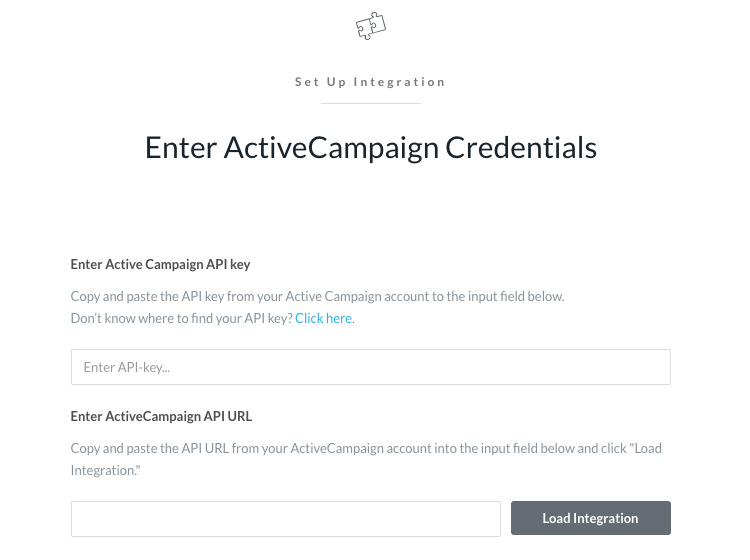
Easily integrate Sleeknote with your email software, like ActiveCampaign
Secondly, synchronize your tracking and data to an analytics tool
Your email marketing data should not sit within a silo from its different software tools. To evaluate the success of your email marketing campaigns, it is vital that your marketing data is benchmarked with, and collated alongside your other data flows so you can track your email conversion rate.
Do this alongside the implementation of relevant pixels on your websites and landing pages, such as the Facebook pixel, Hotjar, and the Google Analytics pixel.
To visualise your analytics at one place, and gain useful insights on your email marketing, Sleeknote integrates with numerous third-party applications, including email marketing software, such as Campaign Monitor, MailChimp, and Drip. Custom integrations can also be set up with other email marketing software via Sleeknote.
Thirdly, research and understand your target audience
This is one of the steps which many marketers do not take seriously.
However, the target audience should come in first in any marketing strategy, and this is especially important for email marketing. Many email marketers focus on the technicalities of their email set-up, or their content, but fail to realise how their content might resonate with the reader.

Build your customer personas
Customer personas are profiles of your hypothetical customer, with emotive information such as personal motivations, combined with analytical research of the customer’s socioeconomic and demographic factors.
Conduct in-depth research into the type of audience that is visiting your website: are they young professionals, adults; what jobs do they have; what are their interests; and what are their desires? Then, use these insights in your email strategy.
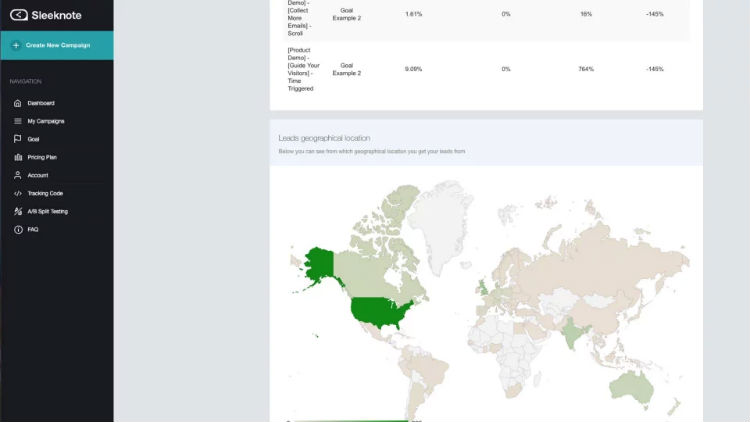
Use Advanced Analytics to identify your leads and visitors
Sleeknote provides the data you need to improve your email conversions by helping you better understand the behavior of the users on your website. The Advanced Analytics feature allows you to identify your leads and visitors through their devices, geography, and source, allowing you to glean insights into the profile and behavior of your customers.
By researching and understanding your target audience, you are then able to personalise your emails to them through email segmentation, which will be covered later in this blog. With a keen insight into your consumer personas, your content team can then tailor communications with your customers. This has research-proven benefits for improving your email conversion rate: according to a survey, personalised emails deliver 6X higher transaction rates.
Fourth, segment your audience
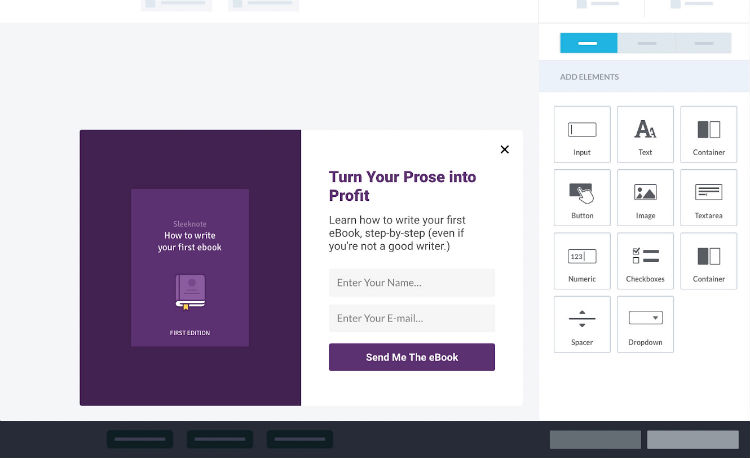
A. Segment your audience based on initial data during signup
Fun fact: marketer who segmented their campaigns noted as much as a 760% increase in revenue.
The ability to segment your list depends on the data you receive. It is vital that you do not simply collect information about your subscribers’ email addresses, but that you are also able to enrich their profiles with information such as their socio-demographic characteristics such as age, gender and geographic location. These additional data points will allow you to garner more email marketing conversions.
Sleeknote allows you to convert targeted visitors into email leads, through advanced features such as page-specific targeting which includes displaying personalised on-page messages to the right visitor, and targeting new versus returning visitors.
This then allows you to drive email conversion data into your software providers, from email software like MailChimp, to your e-commerce platforms, including Shopify, Magento, BigCommerce and BigCartel.

B. Then, segment your audiences again through email KPIs based on their behavior
Depending on the behaviour of your mailing list during your first campaigns, you will be able to segment your contacts further into different lists to improve your email conversion rate.
These segments can be further divided into the life cycle of users, their demographic characteristics, commitment or frequency of purchase. For example, favorable users who have a high open rate, conversion rate, and click-through rate could be piled into a warm segment who receives highly frequent and personalized emails. As part of your multilayered email strategy, you can then create follow-up emails based on the users’ socio-demographic characteristics.
Segmenting your list will allow you to adapt your campaigns’ content according to the type of audience, thus increasing your email conversions.
Fifth: Focus on quality content to improve engagement
The content of your email will always be the most crucial part of it. You might have a spectacular email marketing strategy, or the best attribution flow set up, but if you do not create and deliver quality content, all of these will be for naught.
Using the insights from your consumer personas, tailor your content in its tone, style, titles, and visuals, to your target audience.
For example, if your business’ main target audience consists of mostly adults in their 20s, you might keep a professional, clear and formal tone, alongside tongue-in-cheek humour through the injection of certain memes or visuals.

Here are some content guidelines and vital components of a newsletter:
- Personalize: Use what you know about your audience, and address them directly in the email with their names to establish rapport.
- KISS: Stands for “Keep it Simple, Silly.” Keep your emails succinct, clear and above all, simple to understand.
- Include a clear CTA (call-to-action): Your CTA must be engaging and have a unique purpose, geared towards your primary KPIs and goals. According to surveys, including a single CTA can increase your clicks and sales (by 371% and 1617% respectively). These CTAs need to be tagged to the right email conversion event.
- Play on urgency: Include time-bound offers which might only be available within the day, or a short-time period, the offer is only available today. He must make a decision quickly, or else he will miss a good deal.
Remember to use the wording, the same offer, in your email and on your landing page.
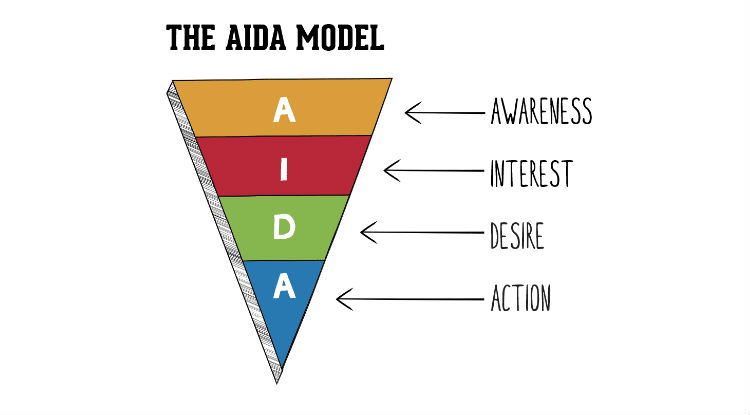
Use A.I.D.A. for your content writing:
Respect the AIDA formula, a succession of stages through which your contact must go through, after reading your message. These steps will facilitate the transformation of your prospects into customers. Here are the magic letters that ensure an effective engagement journey:
- “A” to capture attention;
- “I” to generate interest;
- “D” to provoke desire;
- “A” for action.
Discover what your target audience is looking for, prepare original content and… conquer with your email marketing strategy!
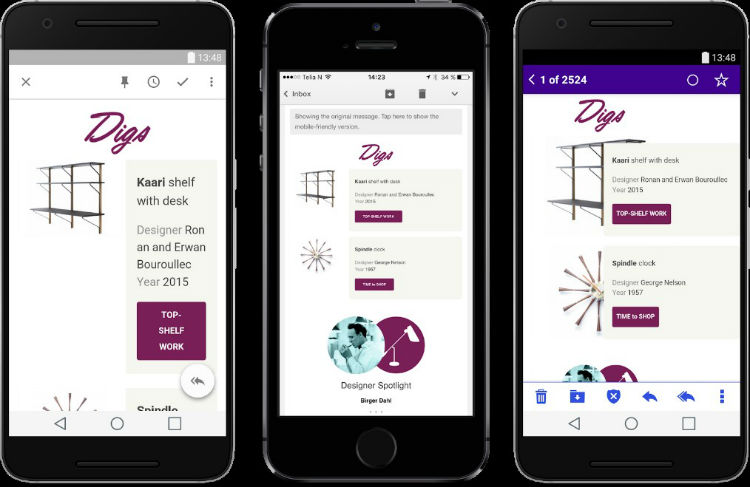
Sixth, create your emails with mobile compatibility in mind.
Your email strategy needs to be mobile-first.
Today, we live in the era of smartphones. Many now prefer to check their emails immediately on their mobile, with mobile opens accounting for 46% of all email opens.
To prevent your emails from being deleted due to poor display, make sure your emails are optimised for all types and versions of smartphones. All text blocks, images, call-to-action buttons should be suitable for any device and / or browser.
Remember that user experience is a crucial factor in your emailing campaigns’ success and, therefore, your sales. Poor user experience leads to a higher delete rate, an increase in the likelihood of your emails moving to spam and a lower email deliverability rate.
How to offer the best user experience to mobile users?
- Enlarge the text font on your website
- Expand the call-to-action buttons.
- Shorten contact forms
- Reduce the size (and thus their weight) of the images to improve the website’s loading speed.
Seventh, Determine the right frequency
Your email send frequency influences both your open rates and your unsubscribes.
The frequency of sending emails will therefore affect your ability to convert your prospect or customer. You need to keep the recipient warm regularly so that they don’t forget you, but you also don’t have to bombard them with emails, otherwise, this will annoy them and increase the likelihood of them moving your emails to spam. Remember to test different timings, different intervals between your emails.
Campaign Monitor’s suggested ideal email sending frequency is every 2 weeks, without burning out your subscriber list. However, take this information with a pinch of salt – your audiences will likely respond differently depending on which segments they are divided into.
You’re welcome to A/B test and experiment with certain segments to optimise your email marketing conversions.
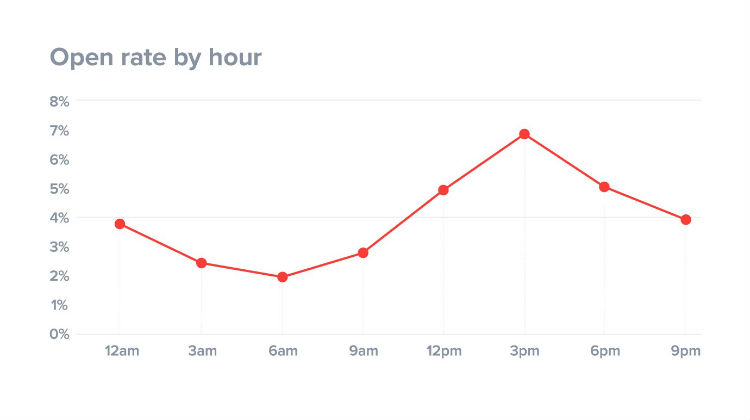
In terms of email send timings, according to Campaign Monitor, the best time to send email is between 12pm to 6pm, with the best timing at late afternoon (3pm).
Lastly, test, test, test!
The last tip, test and test your automated schemes before sending emails to your distribution lists.
A/B testing is a crucial component of your email marketing strategy.
Your goal is to optimise the performance of your emailing by comparing the differences between 2 versions: version A and version B.
By measuring criteria such as the click-through rate and the open rate for each version of changes, you can easily identify the impact of criteria such as the time or day of sending, the title, the sender name, the visual, the texts, or the calls to action on the performance of your emailing campaign.
Email Components to A/B Test:
Here are some examples of email components that you can A/B test:
- Subject title
- Call-to-action
- Sender name
- Time-of-day of send
- Frequency of send
- Visuals and graphics
- Copy

Increase your conversion rates with Sleeknote’s A/B split testing
Sleeknote’s A/B testing is based on the 3 metrics: views, clicks, and conversion rate.
Decide the elements to test for and the test duration, and Sleeknote’s technology will provide in real-time the results of your clickthrough rate and conversion rates.
In conclusion, the 8 steps to an optimal email marketing strategy are as follows:
- Set S.M.A.R.T. goals based on your identified email marketing KPIs.
- Synchronise your tracking and data across all channels.
- Research and understand your target audience through consumer personas and analytics.
- Segment your audiences based on initial data and email KPIs.
- Focus on quality content to improve engagement.
- Create your emails with mobile compatibility in mind.
- Determine the right frequency and timing to send your emails.
- A/B test regularly amongst your segments and content components.
If you follow the 8 steps above guidelines well, your email marketing campaigns will become more effective and increase your conversions over time.
About the Author

As CEO and co-founder of Traktion, Saher Shodhan is passionate about helping businesses scale with the right growth talent. Having started his career as part of the Uber launch team in India, Saher has 5+ years scaling marketplace businesses across 3 countries. He is also the co-founder of P2P events platform, Lemonade


